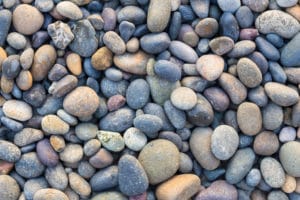Summer Sandbox Fun: 5 Design Ideas Your Kids Will Dig

The Pallet Box. Rather than tossing out those used pallets, they can be sanded, painted, assembled into formation and filled with sand for an easy play piece.
The Picnic Table Box. This idea is great for those with smaller yards that may not have sufficient room for a full-size sandbox, and provides both seating and sand play. Simply build a frame around the table top, fill it with sand, and add pals and shovels. Your kids can sit or kneel on the table’s seats while building sand castles on the tabletop.
The Tire Box. If you’ve got an old tractor, or other large tire, you can simply lay down liner under the tire, paint the tire in fun colors if you wish, and fill the center with sand. Adhering pool noodles to metal edges keeps things safe.
The Bed Box. This one requires a flat platform bed frame. Fill with sand or a combination of sand and crushed gravel and you are good to go. Bonus points for bed frames with a headboard. Fasten a chalkboard onto the headboard for extra fun.
The Tent Box. Repurpose that old or unused camping tent that’s just taking up space and turn it into a sandbox complete with shade. Once the tent is set up and filled, kids can play inside. This option is also great for kids especially sensitive to direct sun exposure.
One caution: If you make your sandbox cool enough, your yard may become the go-to fun spot for the neighborhood. You may need to stock up on lemonade and refreshing cocktails for your parent friends.

 There are a number of reasons to use washed gravel in your landscaping. Some people wonder about
There are a number of reasons to use washed gravel in your landscaping. Some people wonder about  Spring is upon us, and many are looking into different types of flowers to add to their garden. Picking out new arrangements and preparing for new things to blossom in your yard space is exciting, but knowing your soil is important for ensuring your plant life thrives.
Spring is upon us, and many are looking into different types of flowers to add to their garden. Picking out new arrangements and preparing for new things to blossom in your yard space is exciting, but knowing your soil is important for ensuring your plant life thrives. Utility sand is an extremely versatile product. With the right application and creative idea, you can turn an ordinary backyard into a landscaping dream. Unfortunately, it can sometimes be a challenge to come up with clever and inventive ways to use a somewhat generic material. We figured we’d give you a push in the right direction with these three ways to use utility sand in your yard.
Utility sand is an extremely versatile product. With the right application and creative idea, you can turn an ordinary backyard into a landscaping dream. Unfortunately, it can sometimes be a challenge to come up with clever and inventive ways to use a somewhat generic material. We figured we’d give you a push in the right direction with these three ways to use utility sand in your yard. Healthy and good-quality topsoil can do wonders for your overall landscaping process, and it ensures your plant life stays happier and healthier. Topsoil is the outermost layer of soil in which you plant your flowers and other plants. Most topsoil will be around five inches thick, but it could range anywhere between two and ten inches thick.
Healthy and good-quality topsoil can do wonders for your overall landscaping process, and it ensures your plant life stays happier and healthier. Topsoil is the outermost layer of soil in which you plant your flowers and other plants. Most topsoil will be around five inches thick, but it could range anywhere between two and ten inches thick. Many different styles of rock provide the beauty and stability for completing various landscaping projects. From lining a pathway to building a retaining wall, rocks are essential building and design tools. However, different types of rocks are appropriate for different projects.
Many different styles of rock provide the beauty and stability for completing various landscaping projects. From lining a pathway to building a retaining wall, rocks are essential building and design tools. However, different types of rocks are appropriate for different projects.
 Drainage Rock is one of the oldest, simplest, and most useful resources available to landscape architects today. Though we may never really think about it, there is a huge variety of stone materials, shapes, and styles that can be used in endless building applications.
Drainage Rock is one of the oldest, simplest, and most useful resources available to landscape architects today. Though we may never really think about it, there is a huge variety of stone materials, shapes, and styles that can be used in endless building applications. Gravel and rock of any kind play important roles in the world of landscaping. From lining pathways to mulching gardens, rock in all shapes and sizes provides both beauty and utility in a variety of applications.
Gravel and rock of any kind play important roles in the world of landscaping. From lining pathways to mulching gardens, rock in all shapes and sizes provides both beauty and utility in a variety of applications. According to a study conducted by Houzz Landscape Trends in 2017, 38% of homeowners upgraded their pathways, driveways, patios, and terraces use crushed gravel or rock. However, crushed gravel, river rocks, and rockery rocks can be used in a variety of home improvement projects beyond outdoor spaces.
According to a study conducted by Houzz Landscape Trends in 2017, 38% of homeowners upgraded their pathways, driveways, patios, and terraces use crushed gravel or rock. However, crushed gravel, river rocks, and rockery rocks can be used in a variety of home improvement projects beyond outdoor spaces.